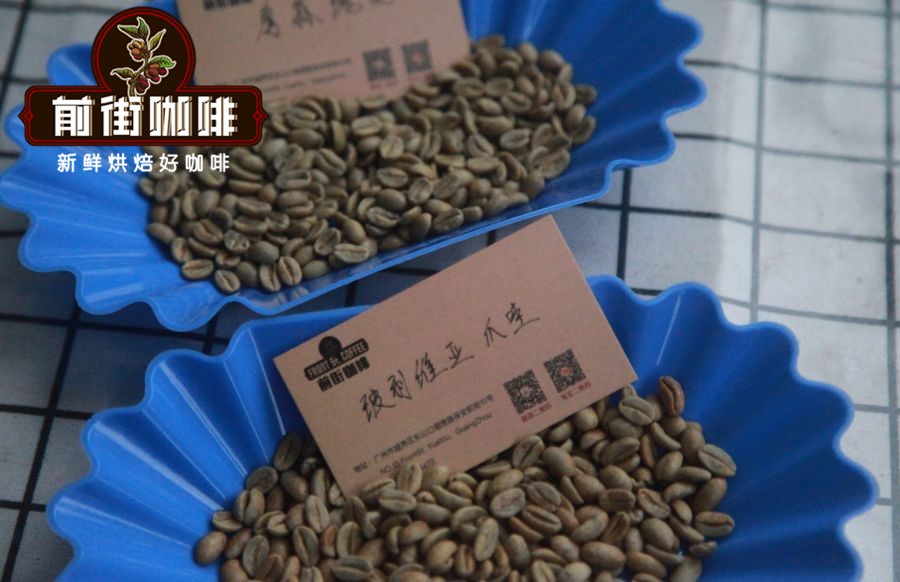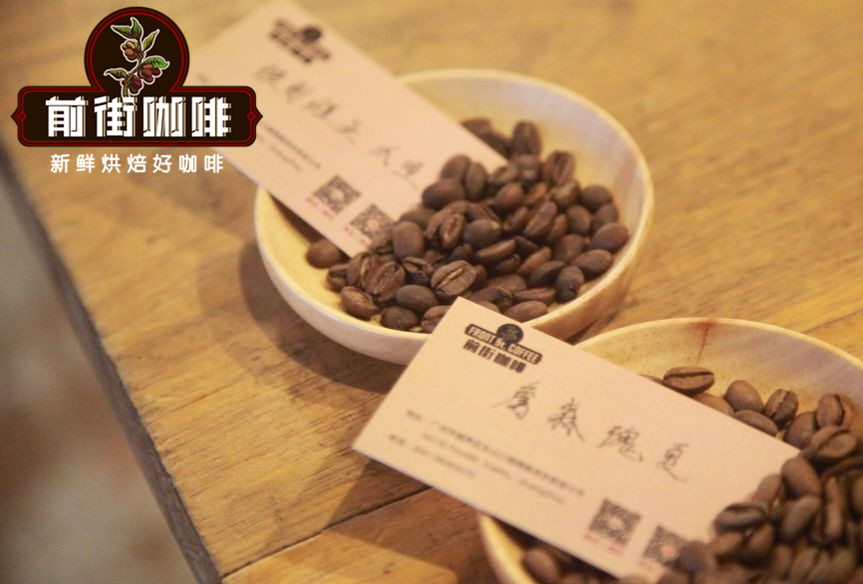The difference between Bolivian Coffee beans and Rosa Coffee beans the taste story of Bolivian Rosa coffee beans
Professional coffee knowledge exchange More coffee bean information Please pay attention to coffee workshop (Weixin Official Accounts cafe_style)
When it comes to rose summer, we will think of all the unique flowers and fruits of this bean. It was precisely because of this that many people sought after him. Front Street Coffee has been bought in the past two days. It is said to be a cousin of Rose Summer. Java. So the question comes. How big is the difference between the two? Front Street This article will compare a series of coffee beans from Jensen Estate in Panama with coffee beans from Bolivia to see the differences between the two.
Rose summer coffee varieties
Rose summer coffee beans are slender, and the flavor is fresh and pleasant. From these two points of view, Rose Summer does not look like coffee varieties in Central and South America, but more like Ethiopian coffee varieties. When was the summer introduced to Panama?
The species of Geisha was discovered in 1931 in Ethiopia's Geisha Forest and sent to the Coffee Institute in Kenya; Introduced to Uganda and Tanzania in 1936 and Costa Rica in 1953, it received little attention until Don Pachi brought it to Costa Rica from the southwestern Ethiopian town of GESHA, then along the southern route into Panama, where Esmeralda Estate separated it from other varieties and won the National Coffee Competition. Front Street Coffee has a full sweet, extremely clean palate through the cup test, with rich aromas spreading from berry and citrus to mango, papaya and peach. A very pronounced bergamot (bergamot)-like finish is also typical of its cup testing properties. So far, Guixia has been the champion of coffee varieties.

Java coffee varieties
In Bolivia, a variety known locally as the long bean is named for its long appearance, and its official name should be Java. Java is a very interesting bean species, and its name suggests a strong association with Indonesia. Java was originally a coffee tree species that originated in the primeval forests of Ethiopia, collected by local peoples and then spread through Yemen to Indonesia, where it was named Java. Java was originally thought to be a branch of tibeka, but genetic alignment revealed that Java was actually a coffee variety from Ethiopia, Abyss inia. After Indonesia, Java spread first to the nearby Timor islands and then to Cameroon in East Africa, where it was first released for farmers in 1980.
As for the spread to Central and South America, it was introduced to Costa Rica in 1991 through CIRAD (the Centre de Coopération Internationale en Recherche Agronomique pour le Développement) under the leadership of breeding expert Benoit Bertrand. The first Central American country to officially recognize Java beans was Panama, while Bolivia was introduced through Nicaragua. The long bean, as its name suggests, has long fruits and seeds, brassy shoots, and rather tall plants but low yields. Because of its outstanding flavor, it is not inferior to rose summer, and has stronger resistance to leaf rust and coffee fruit disease, which is very suitable for smallholder cultivation.
Why, then, are the rosewood and java varieties considered likely relatives? Front Street believes that one is that Java and Rosa both come from Ethiopian forests, followed by Rosa coffee beans and Java coffee beans with elongated bean shapes. Add the front street to show you the difference between a rosewood coffee bean from Jensen Estate in Panama and a java coffee bean from Bolivia.

From the raw beans, Bolivia Java beans are more slender, more pointed at both ends, while Jason Guixia beans will be slightly shorter, more round.

Jason Manor Rose Summer
Bolivia Java
Walken
La Paz region
1700-1750m
1600m
solarization
exposed to sunlight
medium-light baking
medium-light baking
Front Street Coffee Roasting Records
Jason Guixia: This coffee has large particles and a high density. It also absorbs a large amount of heat during the roasting process. The Mena reaction process is also relatively fast.

The oven temperature is 200 degrees Celsius and the oven is put into the pot. The damper is opened to 3.5 degrees Celsius. After 30 seconds, adjust the fire to 160 degrees Celsius. The damper is adjusted to 3 degrees Celsius. The temperature is 132 degrees Celsius. The oven temperature is 153.3 degrees Celsius. Adjust the fire once. At this time, the bean surface turns yellow. The grass smell completely disappears. Dehydration is completed. The fire is adjusted to 140 degrees Celsius. The damper is adjusted to 4 degrees Celsius. At the 90 degree Celsius, the ugly wrinkles and black stripes appear on the bean surface. The taste of toast obviously changes to coffee fragrance. It can be defined as the prelude to the first explosion. At this time, you should clearly hear the sound of the first explosion point. Start the first explosion at 9 47 degrees Celsius. Adjust the fire to 50 degrees Celsius. Fully open the damper 5 degrees (adjust the fire carefully. Do not be too small to have no explosion sound). After the first explosion, develop 2 40 degrees Celsius. Put the oven into the pot at 197.1 degrees Celsius.
Java, bolivia: the front street uses an extended development period to bake a sweet and delicious flavor in order to highlight the sweetness of the sun and the aroma of cocoa. Take Yangjia 800N as an example, use 500g raw beans.

The oven temperature is 170℃, the fire power is 120, the damper is opened to 3; the temperature is 136 ", the damper is opened to 4 when the oven temperature is 111℃, and the fire power is adjusted to 140; when the oven temperature is 151.1℃, the bean surface turns yellow, the grass smell completely disappears, and enters the dehydration stage; when the oven temperature is 756", the bean surface appears ugly beard wrinkles and black stripes, and the toast taste obviously changes to coffee fragrance, which can be defined as the prelude to the first explosion. The damper is adjusted to 5. At this time, the sound of the first explosion point should be heard clearly. At 10 18", the first explosion begins, and after the first explosion, the development is 100. The pot is placed at 190℃.
Front Street Coffee Cup Test Report
[Jason Rose Summer] Dry aroma has ripe fruit fermentation aroma, maple sugar, lemon, citrus, apple, rose, dark chocolate, fruity, pomegranate, ripe grape, peach and dark berry flavor, multi-layered sour and sweet.
[Bolivia Java] Dry fragrance has hazelnut aroma, the entrance first cream, hazelnut, almond sweet, and citrus, tropical fruit sweet and sour notes, with fermented wine aroma.
Front Street Coffee Brewing Comparison
Filter cup: HARIO V60
Water temperature 90 degrees.
Powder water ratio: 1:15
Grindability: fine granulated sugar size
Qianjie coffee adopts segmented extraction: stewing with 30 grams of water for 30 seconds, injecting water in a small circle to 125 grams for segmentation, continuing to inject water to 225 grams when the water level is about to expose the powder bed, removing the filter cup when the water level is about to expose the powder bed, and extracting for 200 "(stewing starts timing).

[Jason Rose Summer] has a fermented aroma of ripe fruits. The entrance has a sour and sweet taste of tropical fruits and berries. The sweet taste of maple sugar is obvious. The aftertaste has some aromas of cocoa, grape and rose tea.
[Bolivia Java] The entrance is obvious citrus, lime, hawthorn sweet and sour feeling, with some fruit chocolate and vanilla cream aftertaste, the temperature drops is sweet orange sour tone, after cooling has a light maple sugar sweet feeling and jasmine tea, rose tea aftertaste, sucrose sweet lasting.
[Jason Rose Summer] will be cleaner in flavor and taste, while [Bolivia Java] will have a richer sense of hierarchy.
More fine coffee beans, please add private WeChat Qianjie Coffee, WeChat: kaixinguoguo0925
Important Notice :
前街咖啡 FrontStreet Coffee has moved to new addredd:
FrontStreet Coffee Address: 315,Donghua East Road,GuangZhou
Tel:020 38364473
- Prev

Introduction to the flavor and taste of Panamanian rosy summer coffee price boutique coffee beans
Geisha) has been grown in many parts of the world and is the new king of boutique coffee, among which Panama, Guatemala, Colombia and other Latin American countries have higher quality and higher prices. 2. The characteristics of Rosa coffee beans are very beautiful blue-green, jade-like warm texture, smell of fresh grass, peach, berry and most coffee beans.
- Next

Indonesian Mantenin Coffee Features Fine Coffee Mantenin Flavor Taste Manor
Mantenin coffee Mantenin coffee is produced in Sumatra, Indonesia, Asia, otherwise known as Sumatra coffee. The main habitats are Java, Sulawesi and Sumatra, 90% of which are Robusta species. The most famous of these is the "Mantelin" from Sumatra. Fine traditional Arabica coffee grown in Sumatra North, the best of which is titled Linton
Related
- Detailed explanation of Jadeite planting Land in Panamanian Jadeite Manor introduction to the grading system of Jadeite competitive bidding, Red bid, Green bid and Rose Summer
- Story of Coffee planting in Brenka region of Costa Rica Stonehenge Manor anaerobic heavy honey treatment of flavor mouth
- What's on the barrel of Blue Mountain Coffee beans?
- Can American coffee also pull flowers? How to use hot American style to pull out a good-looking pattern?
- Can you make a cold extract with coffee beans? What is the right proportion for cold-extracted coffee formula?
- Indonesian PWN Gold Mandrine Coffee Origin Features Flavor How to Chong? Mandolin coffee is American.
- A brief introduction to the flavor characteristics of Brazilian yellow bourbon coffee beans
- What is the effect of different water quality on the flavor of cold-extracted coffee? What kind of water is best for brewing coffee?
- Why do you think of Rose Summer whenever you mention Panamanian coffee?
- Introduction to the characteristics of authentic blue mountain coffee bean producing areas? What is the CIB Coffee Authority in Jamaica?

